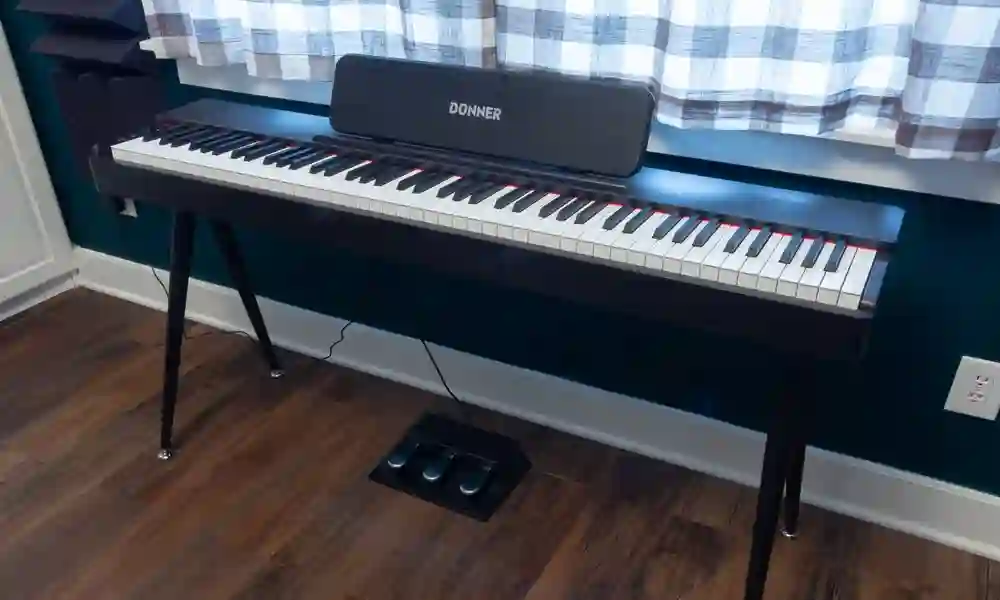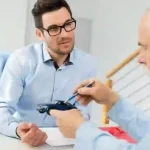So, you wanna buy the best digital piano, huh? Easy to say, harder to do. There are a ton of options out there, and if you’re like me, you probably spent hours watching YouTube reviews, reading forums, and still feeling totally overwhelmed. Trust me, I’ve been down that rabbit hole—twice.
Anyway, whether you’re a newbie just figuring out middle C from a pile of keys or a pro who wants something fancy enough to impress your in-laws, this guide’s got your back. We’ll talk about the best digital piano models for every level, what to look for (because trust me, not all keyboards are created equal), and some tips I wish someone told me before I blew a small fortune on a dud.
Why Even Bother with a Digital Piano?
Look, real pianos are great if you have space, patience, and a small fortune in your back pocket for tuning. But most of us don’t.
Digital pianos? They’re the rockstars of convenience.
- You can turn the volume down—or go silent with headphones.
- No tuning nightmares (I still cringe thinking about my great-uncle’s old upright).
- They’re lighter, so moving your piano isn’t a full-blown workout.
- Plus, most come with nifty extras like recording features and app connectivity.
I once lugged a giant acoustic piano up three flights of stairs. Don’t ask. If I had a dollar for every time I wished for the best digital piano instead… well, I could probably buy one now.
What Really Matters When Picking the Best Digital Piano
This is where folks get lost. Because specs can be confusing. I mean, “polyphony” sounds like a sci-fi weapon, right? Here’s what you actually need to focus on:
Keyboard Feel — The Big Deal
If your keyboard doesn’t feel like a real piano, you’re gonna hate practicing. Plain and simple.
- Weighted keys mean keys push back like the real thing.
- Hammer action mimics the mechanics inside a grand piano.
- And graded hammer action? That’s fancy talk for heavier keys on the left, lighter on the right—just like the real deal.
If you’re a beginner and just wanna mess around, maybe weighted keys aren’t super urgent. But if you want to grow, weighted keys on the best digital piano make a world of difference.
Sound Quality — No One Likes a Tinny Piano
When you press a key, it should sing (or at least not sound like a robot). The best digital piano uses samples from real grand pianos. I once played a keyboard that sounded like someone dropping a piano down the stairs. Not fun.
Look for:
- Multi-layer sampling — it means the piano sounds different when you play softly or slam the keys (don’t judge, we all have that moment).
- Stereo speakers that fill the room (or your headphones).
Polyphony — Say What?
Polyphony is how many notes can ring at once. Why care?
Imagine playing a chord with your left hand, and your right hand trills — if your polyphony is too low, notes will cut off mid-song. I learned this the hard way during a recital. Cringe.
Shoot for at least 64-note polyphony. If you want to go nuts, 128 is even better.
Extras to Brag About
- USB or MIDI ports so you can hook up to apps or computers.
- A metronome for keeping rhythm (I used to ignore mine… now I regret it).
- Built-in lesson modes to shame your dog when you skip practice.
- Multiple voices if you want to pretend you’re a jazz band.
Best Digital Piano for Beginners (Because We All Start Somewhere)
If you’re fresh to the keys, listen up.
Yamaha P-45 — The Classic Starter
This one’s like the reliable old truck of digital pianos. Nothing fancy, but it gets you where you need to go.
- 88 weighted keys with graded hammer action.
- 64-note polyphony.
- Ten built-in sounds (piano plus some extras if you get bored).
- USB to host — great for connecting to apps.
- Costs less than your monthly coffee habit.
I bought this for my niece last Christmas. She learned faster than I did, and she didn’t complain once about the keys feeling fake. Win.
Casio Privia PX-160 — A Step Up
The PX-160’s got a slicker sound engine and heavier polyphony (128 notes!). Plus, those tri-sensor keys really do feel nice.
- Stereo speakers that sound way better than their price tag suggests.
- USB MIDI support for nerdy digital stuff.
- And honestly, it looks cooler than most budget pianos.
I once tested one in Pete’s Music Shop down on 5th Ave — the cracked watering can next to the register made me smile. Real-world charm, y’know?
Best Digital Piano for Intermediates — For When You’re Serious-ish
Okay, you’ve got the basics down. Maybe you’re playing Chopin or pretending to.
Roland FP-30X — Modern & Mighty
This baby is a crowd favorite for a reason:
- PHA-4 Standard weighted keys with escapement (sounds scary, but it’s basically a real piano feel).
- 128-note polyphony — play all you want.
- SuperNATURAL sound engine that sounds… well, natural.
- Bluetooth MIDI and audio so you can jam wirelessly.
My cousin swears by this one. She even does impromptu gigs with it — no fuss, all fun.
Kawai ES110 — The Secret Weapon
This one might be the ninja of digital pianos.
- Responsive Hammer Compact II action feels smooth.
- 192-note polyphony (yes, seriously).
- Harmonic Imaging sound tech that’s really immersive.
- Built-in lessons, so no excuses!
Fun fact: The owner of my local coffee shop learned to play on this exact model — heard him jamming while brewing lattes. The best background music ever.
Best Digital Piano for Experts — Because You’re Basically Elton John Now
If you’re dreaming of Carnegie Hall or just want the fanciest keyboard on the block, look no further.
Yamaha Clavinova CLP-735 — The Grandmaster
This piano’s action is called GrandTouch, with escapement and all the jazz. It’s a digital piano that basically feels like a grand.
- 256-note polyphony — you’re covered for anything.
- Binaural sampling makes headphone play feel like a concert.
- Virtual Resonance Modeling (VRM) adds layers of depth.
- Tons of customization for your perfect sound.
When I played this once, I swear I could smell the polished wood and felt the concert hall vibes. Almost cried. Almost.
Roland RD-2000 — Pro-Level Performer
This is for the touring musician with heavy gear.
- Hybrid Weighted Action that’s super responsive.
- Dual sound engines for layering your sound.
- Loads of controls for live tweaking.
- Built tough — like a tank for the road.
My bandmate uses one on tour — he says it survives worse than his “living on coffee and pizza” lifestyle.
Quick Cheat Sheet: Best Digital Piano Models at a Glance
| Model | Level | Keys & Action | Polyphony | Sound Engine | Price |
| Yamaha P-45 | Beginner | 88 weighted, GHS action | 64 | AWM stereo sampling | $450-$550 |
| Casio PX-160 | Beginner | Tri-sensor scaled hammer | 128 | AiR sound source | $500-$600 |
| Roland FP-30X | Intermediate | PHA-4 Standard w/ escapement | 128 | SuperNATURAL piano | $700-$900 |
| Kawai ES110 | Intermediate | Responsive Hammer Compact II | 192 | Harmonic imaging | $700-$900 |
| Yamaha CLP-735 | Expert | GrandTouch w/ escapement | 256 | Binaural sampling & VRM | $2800+ |
| Roland RD-2000 | Expert | Hybrid weighted | 128 | Dual sound engines | $2500+ |
How to Pick Your Best Digital Piano
Alright, real talk: the best digital piano for you depends on a few things.
- Budget. How much cash do you wanna drop? I recommend not eating ramen for a month unless you’re really committed.
- Space. Got a tiny apartment? Go for something portable.
- Skill level. Don’t buy a concert beast if you’re just noodling around.
- Features. Need a metronome, lessons, or Bluetooth? It’s your call.
Honestly, just walk into a store and play whatever you’re eyeing. Your fingers will tell you what’s right.
Keep Your Digital Piano Happy (Unlike My First Herb Garden)
I once drowned my favorite plant, Gary. Twice. Digital pianos are easier to care for, but they still need some TLC:
- Dust ’em off regularly — no need to go nuts.
- Keep away from moisture (I repeat: no coffee spills!).
- Use a cover to keep out the cats and curious toddlers.
- Update the software if your model has it.
- Don’t leave it baking in the sun unless you want a sad story.
FAQs — Because I’m Guessing You’ve Got Questions
Q: What’s the deal with weighted keys?
A: They make you feel like you’re playing a real piano. No weighted keys = toy vibes.
Q: Can I plug headphones in?
A: Heck yes. Perfect for late-night sessions that won’t get you kicked out of the house.
Q: How many notes is enough polyphony?
A: 64 to 128 notes is good for most players. More if you’re crazy good.








